Energy Production from January to February 2025
From January to February, the growth rate of coal and natural gas produced by industrial enterprises above the designated size accelerated, while the production of crude petroleum oil, and electricity remained stable.
I. Coal, Crude Petroleum Oil and Natural Gas Production and Relevant Information
The growth rate of coal production accelerated. From January to February, 770 million tons of coal were produced by industrial enterprises above the designated size, up by 7.7 percent year on year, a growth rate of 3.5 percentage points faster than that in December 2024, with an average daily output of 12.97 million tons.
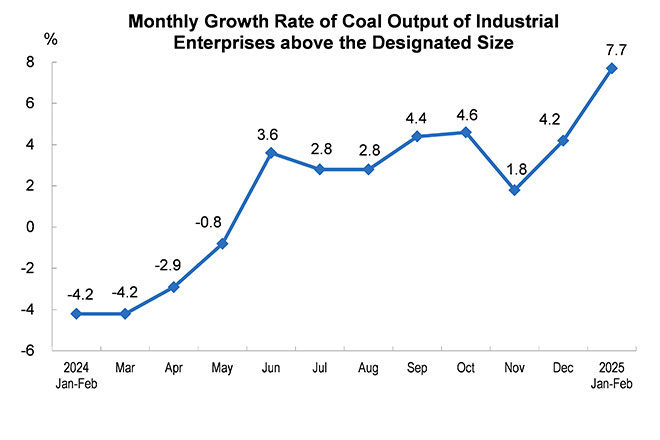
The production of crude petroleum oil was of steady trend. From January to February, 35.04 million tons of crude petroleum oil were produced by industrial enterprises above the designated size, down by 0.2 percent year on year, with an average daily output of 594,000 tons.
The growth rate of crude petroleum oil processing accelerated. From January to February, 119.17 million tons of crude petroleum oil were processed by industrial enterprises above the designated size, up by 2.1 percent year on year, a growth rate of 1.5 percentage points faster than that in December 2024; the daily processing capacity averaged 2.02 million tons.
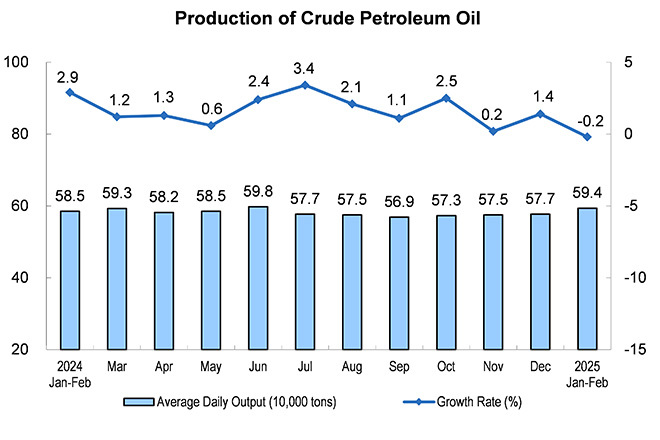
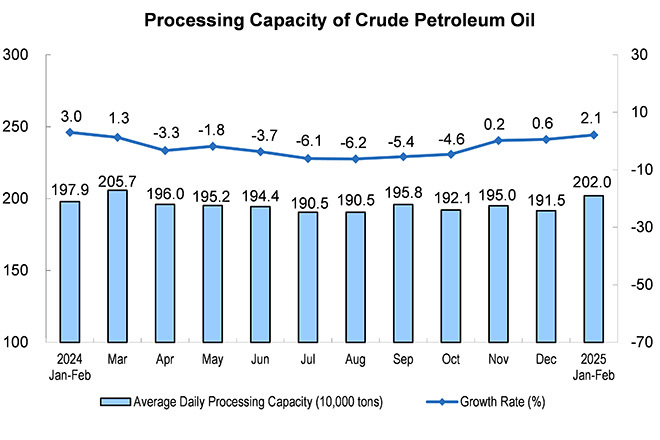
Natural gas production saw steady growth. From January to February, 43.3 billion cubic meters of natural gas were produced by industrial enterprises above the designated size, up by 3.7 percent year on year, a growth rate of 0.1 percentage point faster than that in December 2024, with an average daily output of 730 million cubic meters.
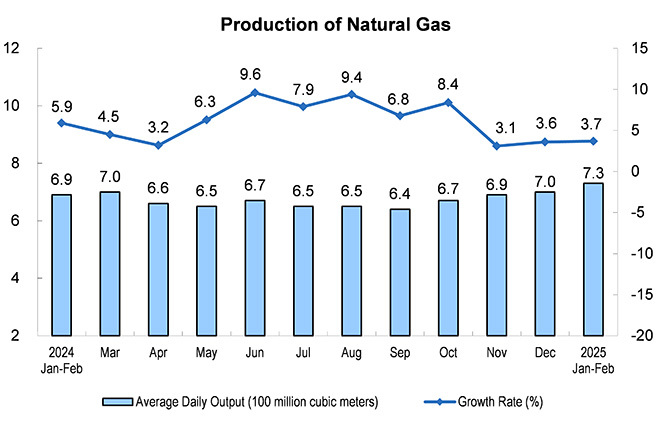
II. Electricity Generation
The power generation of industrial enterprises above the designated size experienced a slight decline. From January to February, 1,492.1 billion kilowatt-hours of electricity were generated by industrial enterprises above the designated size, down by 1.3 percent year on year, while an average daily electricity generation capacity stood at 25.29 billion kilowatt-hours, up by 0.4 percent year on year.
From the perspective of energy sources, from January to February, the growth rate of wind power generated by industrial enterprises above the designated size accelerated, that of hydropower, nuclear-power and solar power generation slowed down and the decline of thermal power generation expanded. Among them, the thermal power generated by industrial enterprises above the designated size decreased by 5.8 percent year on year, with the decline expanding by 3.2 percentage points compared to December 2024; the hydropower generated by industrial enterprises above the designated size increased by 4.5 percent, with the growth rate slowing by 1.0 percentage point; the nuclear-power generated by industrial enterprises above the designated size increased by 7.7 percent, with the growth rate slowing by 3.7 percentage points; the wind power generated by industrial enterprises above the designated size increased by 10.4 percent, with the growth rate accelerating by 3.8 percentage points; and the solar power generated by industrial enterprises above the designated size increased by 27.4 percent, with the growth rate slowing by 1.1 percentage points.
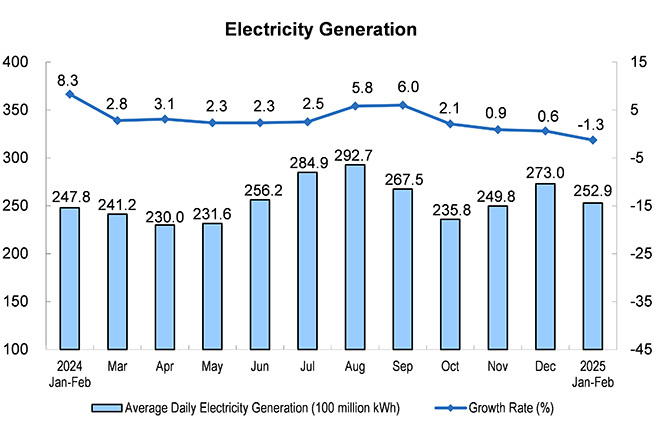
Annotations:
1. Explanatory Notes
Average daily product output: It is calculated by dividing the total output of industrial enterprises above the designated size announced in that month by the calendar days of that month.
2. Statistical Coverage
The statistical caliber of the output data in the report is the industrial enterprises above the designated size, and the statistical scope is industrial enterprises with an annual main business revenue of 20 million yuan and above.
Because the scope of industrial enterprises above the designated size changes every year, to ensure that this year's data is comparable with the previous year's, the cumulative figures for the same period last year used to calculate year-on-year growth rates for product output and other indicators are consistent with the statistical scope of enterprises in the current period. And there may be a discrepancy in statistical standard and coverage between the data released this year and last year.
3. Conversion relationship of natural gas units: 1 ton is equal to 1,380 cubic meters.
